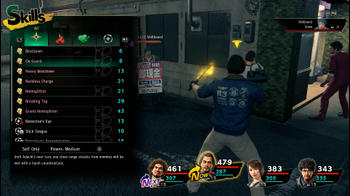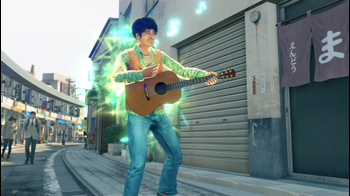
Yakuza: Like A Dragon Review
It is hard to believe that the Yakuza series has been around for nearly fifteen years now. From its humble beginnings on the PS2 and having a title on every PlayStation non-Vita platform since then, the series has grown and evolved each step of the way. Despite its long-standing presence, the awareness and popularity that the Yakuza franchise enjoys today in the west exploded with the localization of Yakuza 0 three years ago. To many fans, that game was the ideal entry point into the series and most importantly, it was a damn good game.
There have been recent efforts to expand the series beyond just PlayStation though. Yakuza 0, Yakuza Kiwami, and Yakuza Kiwami 2 were later made available on PC and Xbox One, while the rest remain PlayStation exclusives at this moment in time. Now at seven mainline titles prior to Like A Dragon, there is an understandable concern to reinvigorate the series so more newcomers can give it a shot. In Japan, Yakuza: Like A Dragon is titled as Ryu ga Gotoku 7, which distinctly categorizes it as a mainline game that takes place after the events of Yakuza 6. Despite the western marketing push for Like A Dragon to be a new starting point like Yakuza 0, it feels disingenuous in expecting optimistic individuals to understand Like A Dragon’s narrative without prior knowledge or experience of the series.
I can see why painting Like A Dragon from that angle seems appealing. Simply put, this is not the Yakuza experience that series’ fans will be accustomed to. Like A Dragon is a turn-based RPG now, not an action beat’em up brawler, and it stars a new main character in Ichiban Kasuga. Curious about how closely Like A Dragon would rely on knowledge from the previous games, I replayed every single mainline Yakuza title earlier this year to brush up my memory.
This is probably the last thing you want to hear if you’re a potential newcomer to Yakuza with this entry. If you want to understand Yakuza: Like A Dragon’s story, you will need to have played the previous games.
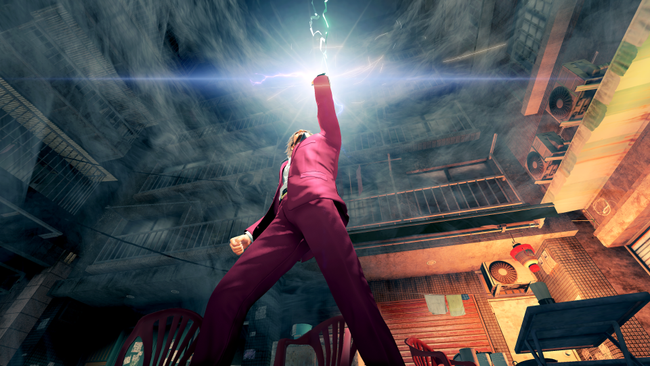
It is easy enough to follow the plot early on as a Yakuza neophyte, but this drastically changes in the last third of the game. Like A Dragon’s beginning starts deliberately slow, establishing what kind of person Ichiban is, where he comes from, and the events that led up to him serving eighteen years in prison; his release occurs three years after the events of Yakuza 6. A lot of the finer details doled out about the state of the world will most likely fly over newcomers’ heads, though I imagine it is still manageable to nod along with it.
Once you start approaching the back half of Like A Dragon, a lot of the story’s foundation rests upon prior knowledge from the player. There isn’t a neat, tidy in-game summary recapping fundamental context told from the other Yakuza games; you either know it or you don’t. Numerous callbacks and narrative parallels from past Yakuza games spur up in Like A Dragon that makes lots of aspects in this new entry that much more meaningful and impactful. If you are the type of player that doesn’t mind this, that is totally fine. I am just giving a fair warning right now that Like A Dragon is labeled as a direct sequel in Japan for a good reason.
With all of that in mind, I admire Yakuza: Like A Dragon’s boldness to reinvent the series by hopping to a new genre, even if I don’t think it quite comes together all that well. It’s certainly ambitious, and I believe the groundwork is solid enough that something fantastic could come out of it eventually if the development team decides to give the concept a shot again in the future. Yakuza: Like A Dragon comes off as an unrefined experiment-in-progress; the end result is decent, but the switch to a turn-based RPG has brought about its own sets of problems.
Like A Dragon is in a constant battle with its relationship to older players. It frequently goes out of its way conjuring up in-game explanations of why the game is a turn-based RPG. Ichiban’s adoration for the Dragon Quest series and his strong self-image of being the hero makes his imagination run wild, thus serving as a justification for why allies and foes alike transform in appearance as each battle begins. There’s even the traditional RPG transition animation swirl as you all get transported to a fully 3D battle arena space.
Combat plays out like what you would expect in other modern turn-based RPGs. Commands for attacking, choosing a skill, guarding, and using miscellaneous functions are assigned to the face buttons. Skills consume MP, and these are all standard RPG fare from different types of melee attacks, elemental attacks, healing, buffing, debuffing, and so on. Heat action quicktime events from previous Yakuza iterations are now relegated to melee skills as timed or repeated button presses can increase the damage for some of them. You can reduce the damage of incoming attacks by defending yourself right before an attack hits your character. Sometimes characters will knock over enemies, and attacking them before they get back up will dish out additional damage.
The odd part about Like A Dragon’s battle system boils down to not being able to manually control your character’s movements during fights. Everyone randomly drifts around as they please, even though positioning is a pretty important mechanism. When going in for attacks, Ichiban will sometimes pick up a random nearby object to dish out more effective attacks. If an enemy is blocking your path towards a selected target, they’ll sometimes interrupt you, thereby forfeiting your character’s turn. Normal attacks sometimes take a lengthy amount of time to play out because your characters may be positioned randomly across the street, and they have to run up every single time to hit them… only to run all the way back to their default position after it. Executing an AoE skill on an enemy that happened to barely move a miniscule too far from the enemy group which lessens its effectiveness or vice versa when a dangerous enemy AoE happens to catch your group when they’re together and you have no control over it.
Several of Like A Dragon’s mechanics in battle feel half-baked as a result. Many situations feel like mere happenstance due to what feels like a glaring oversight of not being able to control the position of where your characters are. There will also be situations when environments will work against you and there’s no counterbalance or safety net to prevent it. Rails between you and your opponent tend to have them awkwardly slow down, even sometimes freeze, and approach to attack so the game has to think for a few seconds on how to handle it. There were also times when I hit an enemy too far across a street that the game randomly teleported the enemy to the sidewalk again to relocate them.
Another memorable, and frustrating, instance was that I happened to position the enemy down a set of narrow stairs in front of the cabaret club and my characters had to slowly descend them, get a hit in, and ascend back to where they were every single time. Like A Dragon’s combats occurring nearly anywhere on the map with a dynamic environment on where they start is novel on paper, but it doesn’t feel great when it breaks on me again and again.
To further emphasize that Yakuza has turned over a new leaf to become a turn-based RPG, Like A Dragon features a job system for each of its playable characters. After a certain point a few hours in, characters can freely switch between classes at the work center if they meet the criteria for them. Ichiban’s prerequisites revolve around his attributes (Passion, Kindness, Intelligence, etc.) while his allies correspond with their bond level to Ichiban. This is where Like A Dragon copies a bit of Persona’s homework, though its implementation works well enough. Raising Ichiban’s attributes can be done at the vocational school, working through certain sub-stories, and how he responds to some dialogue options.
Meanwhile, social drink links with Ichiban’s friends are private one-to-one conversations he has with them at their base of operations after their bond gauge reaches a certain threshold to advance to the next level. They give some insight into a character’s background or current issues they’re struggling with on the side. It’s a decent contextualization for getting to know Ichiban’s allies better when the main story can’t accommodate them in a natural way. Having a higher bond level with someone makes them more likely to execute a free follow-up attack too that doesn’t consume their turn and will earn them more experience if they’re not in the frontlines battling with you.
There is a secret playable character that is one big exception to the rule. They are locked behind the business management minigame and their bond links only raise as you continue to engage with that specific minigame. It has its own story arc, similar to how engaging further with the Majima Construction minigame in Yakuza Kiwami 2 unfolded its own tale to tell. Unfortunately, that means this optional character is left out in the cold in terms of main plot relevance as well.
Character levels and job levels are separated; both provide base stats and new abilities as you raise them. As a result, the game disincentivizes class switching because each job always starts at level 1 and you have to build them up separately for each character. There is a paradoxical push to deciding and sticking with a job early on for every character, instead of experimenting with different party chemistries unless you have the patience to grind it out.
What caught me off guard in Like A Dragon is the poor pacing of its difficulty curve. It starts off slow and simple, probably with the assumption that it might be a player’s first time with a turn-based RPG. The most threatening enemies early on are higher-level ones out in town roaming about and the main story does its best to prepare players with equipment in safes found in dungeons. Much of the early game seems like a pleasant romp, and then a little over halfway through, it just unnaturally skyrockets in difficulty in a way that it doesn’t prepare players for at all if they haven’t been diligently grinding. I welcomed the challenge, especially when bosses started to exhibit new patterns and behaviors that pushed me to think about party composition and roles to counter them, but I wish the game gradually introduced this earlier on in a smoother fashion. These difficulty spikes can be a rude awakening.
There are a few other quirks in Like A Dragon’s genre shift. The game has a summon system via the in-game Poundmates app in which the first summon is free, but you have to pay a fee for every subsequent summon after. It features some of my favorite animations in the game; they’re all ridiculously over the top and fun to watch. You’ll get a few during the story, though there are some truly bizarre ones locked behind sub-stories like a crayfish named Nancy. Auto battling can be toggled on, but you’ll have to remain vigilant for QTEs and perfect guarding regardless. Shortcuts to skills can be assigned to the D-pad if you have a few go-to ones that you constantly rely on. I’m left mixed on how Like A Dragon handles its turn-based battles. Clearly a lot of room for improvement, yet it’s not all bad for a first try at it.
The enemy names and designs in this game are on another level. Like A Dragon is in a unique position where it provides a glimpse of what our modern day reality would look like if it was an old school RPG. Pop culture references and parodies run rampant in this game generally in a playful manner, yet there are still a few iffy ones that come off a tad insensitive. Thankfully there is an in-game enemy index that keeps track of foes you encounter.
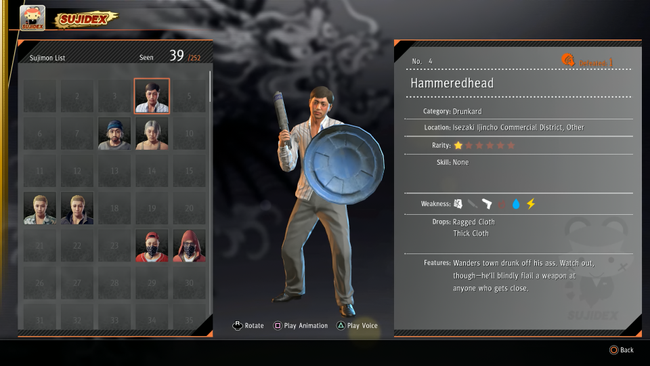
Yokohama takes center stage in Like A Dragon in a city called Isezaki Ijincho. Much like how Kamurocho takes after Kabukicho, it is modeled after Isezakichō. It’s bigger and wider than Kamurocho, which is a bit of a detriment against it. I liked how compact Kamurocho was and everything feels too spread out in Isezaki Ijincho. Fast traveling through taxis slowly opens up district by district as you progress through the story, so you’re forced to run around for a good chunk of the game. Luckily Ichiban has infinite stamina and never tires of sprinting, but it still feels like it takes too long to get anywhere until way later in the game when there are a decent amount of fast travel spots.
Where the game does shine is its main narrative, even if some of its plot beats get weirdly convoluted and the characterization for several characters is spotty. I wasn’t sure how I’d feel about a new main character taking over Kazuma Kiryu, but Ichiban grew on me a lot as the game progressed. Character building is something the folks at Ryu ga Gotoku Studio have delivered on over the years. Although Ichiban has a very different personality, his energetic, bashful, straightforward optimism is executed well. His supporting cast each hold their own for the most part as well, yet it’s a shame that sexual remarks over one of the female characters in your party occur here and there. One of his comrades is an ex-detective and his whole defining traits are that he’s all about booze and women; it feels like a lousy misstep in an otherwise decent cast.
Perhaps the most effective running narrative theme in Like A Dragon is conveying how the story of the next generation will continue to shape the future - both for good, for bad, and everything in between. Messages of the nature of family, the relationships we share with people, how society shapes us into who we are today, and picking up the pieces of how things were handled back then mold Like A Dragon into one of the stronger storylines in the Yakuza franchise. It’s not flawless and in some ways, it undermines several significant story revelations from prior titles that already had a bow placed on them neatly.
Be prepared though; Yakuza: Like A Dragon is filled with cutscenes. I personally like lengthy cutscenes in RPGs, so I didn’t mind them as much. This game has a lot of them; it might be the Yakuza title that has the most such scenes, actually.
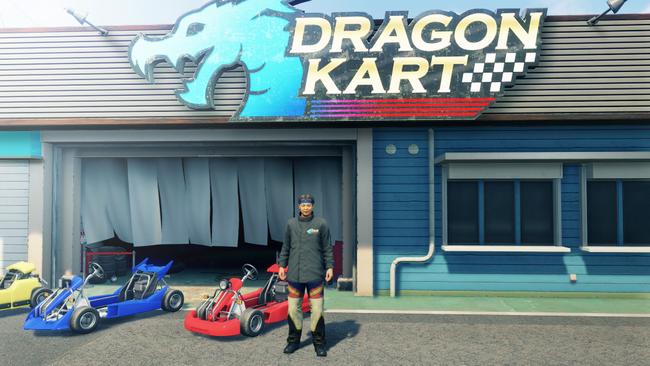
Besides the major changes to its combat and gameplay flow, a lot of what the Yakuza series is known for is still in Like A Dragon to pleasantly distract you from progressing. There are new minigames to engage with like Dragon Kart and collecting cans. Batting cages, golf, karaoke, and a few others make a return. Unfortunately, the fan-favorite cabaret club is a relatively stripped down experience from prior iterations. A new Part Time Hero system serves as the game’s subquest system too. A lot of new sub-stories are in Like A Dragon to discover; longtime fans may see some of their favorites return. My final playtime clocked in around 34 hours, but Yakuza fans know that any of these side activities is an abyss of countless hours to enjoy.
There is a decent game lurking beneath Yakuza: Like A Dragon. Its experimental, numerous half-baked ideas in the shift to a turn-based RPG drag it down from being an excellent experience, but the core ideas are solid enough on paper that they could be amazing if given a future chance. After all, this is the first time the Ryu ga Gotoku Studio development team has embarked on this wild idea to transform this long-running series into something it has never been before. I do disagree that this title can serve as a newcomer’s first foray into the Yakuza series. Yakuza: Like A Dragon is not outstanding, but its vision of what an RPG would look like set in today’s world is fascinating. I played the entire game with Japanese audio and I must say, Ichiban’s voice performance in the finale of his game is phenomenal.
